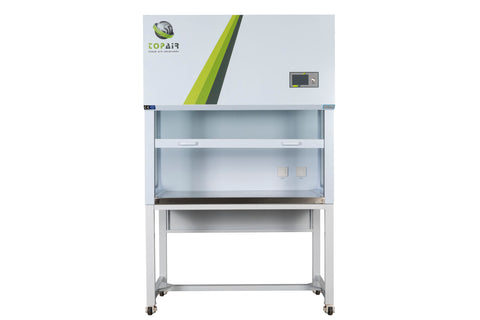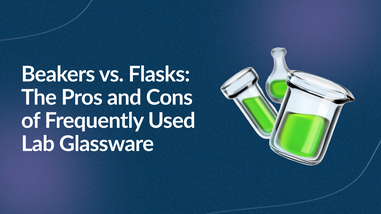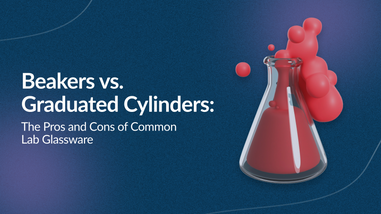- No products in the cart.
In controlled environments where precision and sterility are paramount, laminar airflow hoods play a crucial role. These hoods, commonly found in laboratories, pharmaceutical facilities, and research centers, provide a clean and sterile workspace for various applications. To ensure their optimal functionality and maintain the integrity of experiments and processes, proper cleaning and maintenance are essential. In this blog, we will delve into the key factors that should be kept in mind when cleaning a laminar airflow hood.
-
Frequency of Cleaning
The frequency of cleaning a laminar airflow hood largely depends on the nature of the work being conducted. Hoods involved in sensitive procedures, such as cell culture or DNA manipulation, might require more frequent cleaning compared to those used for less critical tasks. A regular cleaning schedule should be established based on the specific requirements of the facility and the type of experiments being conducted.
-
Pre-Cleaning Preparations
Before initiating the cleaning process, several preparatory steps are crucial. Ensure that all equipment and materials inside the hood are removed or properly covered to prevent contamination. Gather the necessary cleaning supplies, including lint-free wipes, disinfectants, and a HEPA vacuum cleaner, to effectively remove debris and particulates.
-
Use of Appropriate Cleaning Agents
Choosing the right cleaning agents is vital to prevent damage to the laminar airflow hood's surfaces and maintain its functionality. Mild, non-abrasive, and non-corrosive disinfectants should be selected. Alcohol-based solutions are often preferred due to their effective sterilizing properties. It's crucial to consult the manufacturer's guidelines and recommendations for approved cleaning agents.
preferred due to their effective sterilizing properties. It's crucial to consult the manufacturer's guidelines and recommendations for approved cleaning agents.
-
Cleaning Procedure
The cleaning procedure should be systematic to cover all critical areas adequately. Begin by wiping down the external surfaces of the hood, including the frame and control panels. Then, move on to the interior surfaces, such as the work area and the baffles. Pay close attention to corners, edges, and seams where contaminants might accumulate. Horizontal surfaces should be wiped from the cleanest area to the dirtiest to avoid cross-contamination.
-
HEPA Filter Maintenance
The HEPA (High-Efficiency Particulate Air) filters are a cornerstone of laminar airflow hood functionality. These filters capture airborne particles, ensuring a clean and sterile environment. Regular inspection and maintenance of HEPA filters are essential. Depending on the level of usage and the work being conducted, filters might need to be replaced periodically. Follow the manufacturer's guidelines for filter replacement and consider having spare filters on hand.

-
Proper Personal Protective Equipment (PPE)
The safety of personnel performing the cleaning tasks is paramount. Proper PPE, including gloves, lab coats, safety goggles, and masks, should be worn to minimize the risk of exposure to contaminants and cleaning agents. PPE also prevents potential contamination of the laminar airflow hood during the cleaning process.
-
Validation and Documentation
Maintaining a detailed record of the cleaning process is vital for quality control and regulatory compliance. Create a cleaning log that includes the date, time, cleaning agents used, and any observations or issues noted during the process. Regularly validate the effectiveness of the cleaning procedures through microbial testing and particle counts to ensure that the hood consistently meets the required cleanliness standards.
-
Training and Accountability
Cleaning a laminar airflow hood is a specialized task that requires proper training. Designate trained personnel who are familiar with the cleaning protocols and safety measures. Implement a training program to educate new employees and refresh the knowledge of existing staff members regularly. Encouraging a sense of accountability among employees will help maintain a clean and sterile environment.
-
Emergency Spills and Contamination
Despite all precautions, accidents can happen. Establish clear protocols for handling spills and contamination emergencies within the laminar airflow hood. Adequate supplies for containing and cleaning spills should be readily available, and personnel should be trained in the proper procedures to minimize disruptions and prevent potential hazards.
In addition to these factors, there are a few other things to keep in mind when cleaning a laminar airflow hood:
- Wear personal protective equipment (PPE), such as gloves and a lab coat, to protect yourself from exposure to hazardous materials.
- Dispose of contaminated wipes and other materials properly.
- Document the cleaning process to track the frequency of cleaning and the cleaning solution used.
By following these guidelines, you can help to ensure that your laminar airflow hood is clean and effective.
Additional Tips for Cleaning a Laminar Airflow Hood
- If the hood is heavily soiled, you may need to pre-clean it with a mild detergent.
- Pay special attention to the HEPA filter, which should be replaced every 6-12 months.
- If you are working with hazardous materials, you may need to use a specialized cleaning solution.
- Always follow the manufacturer's instructions for cleaning your specific laminar airflow hood.
Conclusion
A laminar airflow hood is a vital tool for maintaining a sterile and controlled environment in various scientific and industrial settings. Regular and proper cleaning of these hoods ensures the accuracy and integrity of experiments, as well as the safety of personnel. By considering factors such as cleaning frequency, appropriate cleaning agents, HEPA filter maintenance, and personnel training, organizations can uphold the highest standards of cleanliness and functionality in their laminar airflow hoods. Remember, a well-maintained laminar airflow hood is not just a piece of equipment; it's a guarantee of precision and reliability in critical operations.
For over 40 years, Lab Pro Inc. has been committed to delivering the highest quality lab equipment such laminar flow hoods, lab supplies, Excelta hand tools, reagents, distance learning kits, and cleanroom PPE apparel. Renowned by global medical device companies and laboratories, we ensure exceptional quality in every product. Contact us online or call 888-452-2776 to learn more. Discover top-notch lab supplies and elevate your experiments today!












































